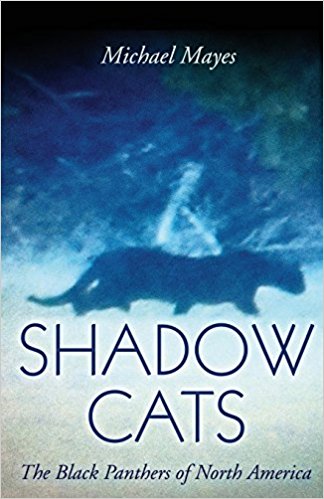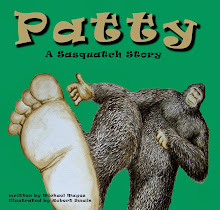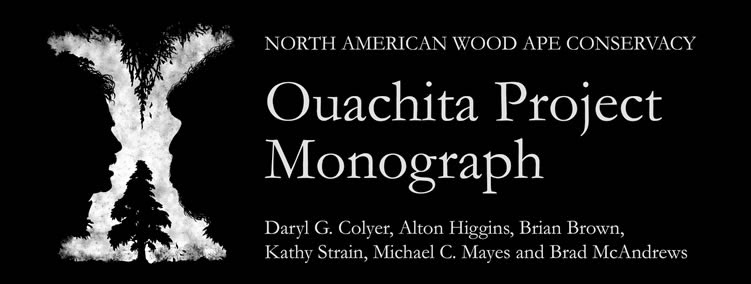For the last few years, I have been deeply involved in several writing projects. Hopefully, you are familiar with the result of at least one of those projects (Valley of the Apes: The Search for Sasquatch in Area X). The process of writing that book was a true labor of love and seeing it published and well received was immensely gratifying. It did, along with other lower profile projects, take a LOT of time. When combined with my regular job of teaching middle school history, my responsibilities as the Chairman of the Board of Directors of the North American Wood Ape Conservancy (NAWAC), and the general stress that comes from life itself, there simply wasn’t much time left over to keep up with the blog (or much of anything else).
I have taken steps to simplify my life and create more time to do the things I really enjoy, like writing this blog. The results have been tangible as I have published three posts this month alone (this will be the fourth). I won’t have quite as much time once school starts in the fall but hope to average two posts per month going forward. I still have a lot to say and there are still an awful lot of strange stories to tell. In that vein, let’s move on to the real topic of this post: black panthers.
Disclaimer: according to mainstream science, there is no such animal as a “black panther.” The panthers of the movies and television are either melanistic leopards or jaguars. Wildlife authorities do not believe either of these species currently inhabit Texas, the American South, or any other region of the United States or Canada (the exceptions being the states of Arizona and New Mexico, in which a few transient male jaguars have been documented). Still, the reports of large, black, long-tailed cats have continued. Documenting and charting the location of the most credible reports is part of my ongoing effort to answer one simple question: what are the black panthers of North America?
The following is a report that I have had in my files for a while. Now that I have some time, I am going to attempt to catch all of you up on the backlog of reports that have come in to me. This account is a long one, so it will be the only report featured in this post. I have edited the report a bit for length in order to make it a better fit for this blog. Wherever you see an elipse (…) some extra material was omitted for the sake of brevity. I do not believe my having done so changes the critical details of the report. The words you do see are those of the gentleman who forwarded the account to me.
Reported January 27, 2022
“Hello, Mr. Mayes.
“I recently visited the North American Bigfoot Center/Museum in Boring, Oregon. While there, I had the opportunity to purchase a number of books, one of which was your Shadow Cats. I specifically bought this book due to its topic on black panthers in North America…
“…I felt compelled to tell you an accurate and true sighting of a black panther in Idaho. The sighting was at a very close range. The witnesses were my mom and dad. I’ve heard the story a number of times and the facts never change, nor would I expect them to as both of my parents are of the highest ethical standards…
“…The sighting took place in west central Idaho around 2012. The closest town would be Cascade, located of highway 55. My dad retired as a captain with the Payette, Idaho Fire Department and my mom was a long-time real estate agent and later worked in the nursing field… When my parents retired, they spent a great deal of time in a side-by-side ATV taking trips deep into the Idaho back country…One trip…they accessed a road off of highway 55 and headed east on a dirt road…Mom and Dad were in no rush, just sightseeing, having a nice lunch, and enjoying the day…They were traveling west back toward highway 55 when Dad’s attention was drawn to the right side of the road where a black cat was lying…This cat then stood and walked across the road in front of their ATV and slunk into the heavy timber…both of them were essentially speechless…My dad recalled saying that was a black panther and that someone’s pet had to have escaped its enclosure…My dad was well-versed in mountain lions and, in fact, we’ve both had the good fortune to see them in the wild. Both of my parents were positive and adamant that this was not a color phase or a hybrid of a mountain lion but a real black panther.
“After several minutes…they were able to re-start down the road. A short distance later, they came upon a couple of…ranch hands. My dad explained to them what they had seen and asked the men if they had any knowledge of panther activity on or around their spread. Dad said the older man’s body language changed and he seemed concerned, leading my mom and dad to think this guy had seen the panther himself or had experienced some livestock loss…prior to my parents leaving, one of the men radioed to the homestead to make sure the women were aware of the sighting and to make sure all of the children were accounted for…
“…I can testify under any oath…that this story is true and correct, a class-A legitimate sighting….my parents did not know there was a following on the topic or that there were even any books written about it. If you are ever inclined to go into this area or even chat up my mom, please feel free to reach out…
L.A. Dove”
TCH Comment: While the report lacks much in the way of detail regarding the appearance of the cat itself (approximate weight, length, etc.) the circumstances would seem to rule out a case of misidentification. Both witnesses were adamant that they saw a black panther and not a dark mountain lion. The fact that the male witness had seen cougars in the wild before, lends credibility to his claim that this was no mountain lion. I must say, the behavior attributed to the ranch hands is interesting. If true - and I have no reason to believe it isn’t – one stiffened up and clammed up while the other quickly radioed home to give the family there a heads up regarding the sighting. It is speculation of course, but these seem to be the behaviors of two men who are familiar with the animal that was described. I guess we’ll never know for sure.
As I mentioned above, due to the length of this submission, I am going to feature it alone on this post. Others will soon follow.
One other thing, I am going to start adding compelling sighting reports from other states on my Black Panther Distribution Map. I think I have accomplished my original goal of trying to pinpoint the most likely places to encounter these cryptid cats in the Lone Star State. Now, I am hoping to identify other patterns on a larger scale by including all of North America. I will be going back through my records and adding some reports that reached me from outside of Texas.
If you are interested and would like to know more about the black panther mystery, check out my book, Shadow Cats: The Black Panthers of North America. Click the book link in the right margin or here for more information.

















